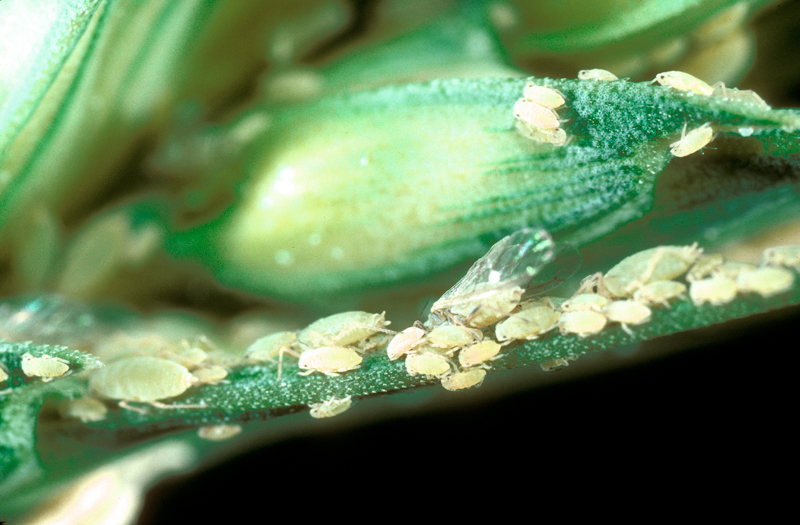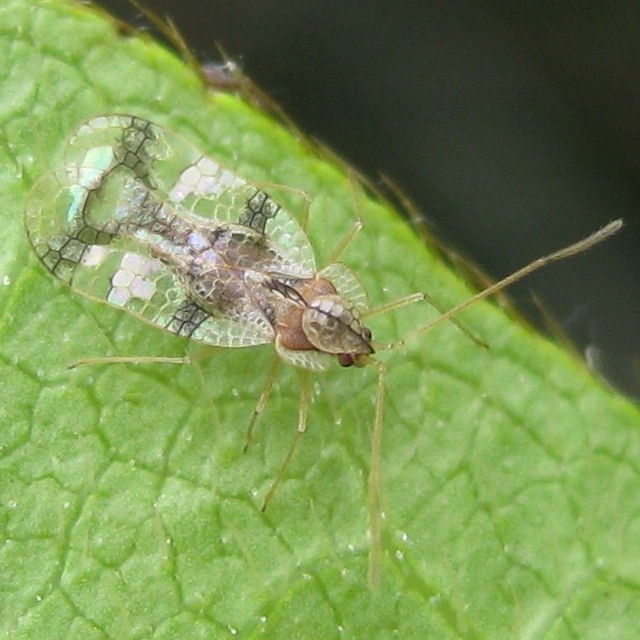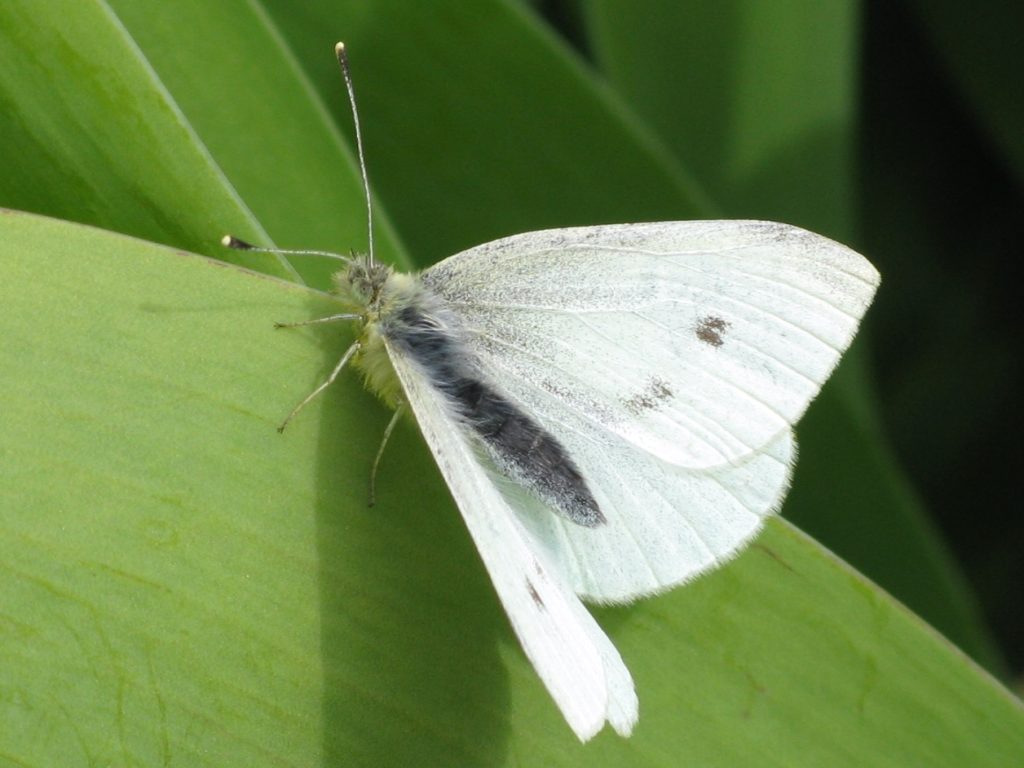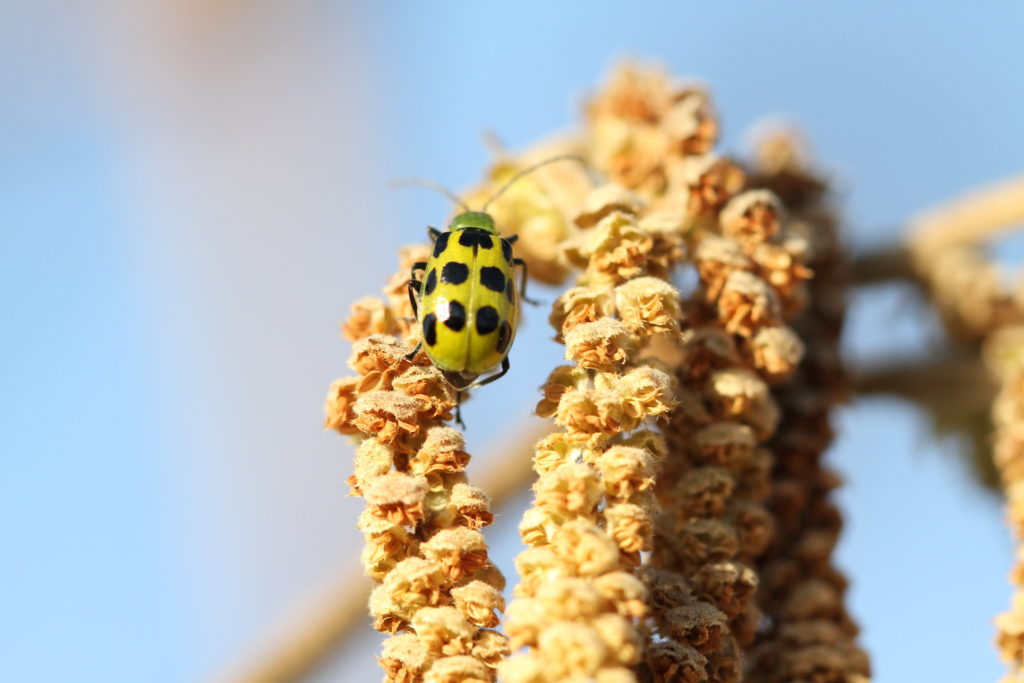You look around the garden and see aphids sucking the life out of your rosebuds, flea beetles chomping on the cauliflower and cabbage butterflies laying eggs that will turn into voracious caterpillars. What to do?
Don’t automatically reach for the spray can, said Heather Stoven, an entomologist for Oregon State University Extension Service. First, determine what is pestering your garden and the ways it can be controlled.
“Assess the damage,” she said, “Do an evaluation. Try to see how many insects there are and if they are spreading. Be sure to identify the insect so you know what you’re dealing with. That way you can most effectively manage the situation.”
Sometimes you won’t have to manage it at all. There will always be insects in the garden – lots of them – and they all play a part in the ecosystem. Often the “good” bugs in your garden will keep the “bad” ones at bay. After all, beneficial insects need something to eat, too.
Stoven recommends Integrated Pest Management, known more commonly as IPM, for fighting off pests. The key is to use multiple techniques. Start off with monitoring – walk through the garden daily to find pests before they become infestations. Decide how much damage you can tolerate as the beneficial insects find their prey and help stave off an outbreak. If things start to balloon, begin control measures with the least toxic methods, like spraying off aphids with a stream of water or covering the cabbage with a row cover.
Learn the lifecycles of the pest insects in your garden, Stoven said. There are weak links when it’s easier to get control of the situation. For instance, soft beetle larvae are easier to kill then hard-shelled adults. Egg masses can be squished or washed off.
Once you’ve got the ID and lifecycles down, you’re well on your way to making decisions about how to control them. To get help with all of this, call or visit your county Extension office and talk to a Master Gardener. Take a look at the hundreds of publications in the Extension catalog. Or, use Ask an Expert, a question-and-answer service where you can post your questions and photos and Extension experts and Master Gardeners find the answers.
At the low end of the IPM spectrum, try physical controls. If there aren’t too many, insects can be picked off the plant and thrown into a bucket of soapy water. Wash off aphids with a spray of water. Put up traps. Use row covers. If none of that works and the damage is past the I-can-handle-it stage, move on to biological controls like nematodes and Bt (Bacillus thuringiensis). If you decide to turn to chemicals, keep in mind even natural substances can kill pollinators and other beneficial insects. Choose the least toxic ones. Read the label to see if it is meant for the insect you’re dealing with and to find out what impact it has on other critters, including humans and pets. Always follow the directions.
Keep in mind the healthier your garden, the less likely pests will get to an unacceptable level, Stoven noted. Water correctly, practice good sanitation, keep plants from crowding each other and prune to keep good air circulation. One thing people don’t think about is over fertilization. Insects love the luscious new growth brought on by too much fertilization.
“Properly grow plants,” she said. “Keep them healthy and they’ll be able to fight off pests much easier.”
Stoven identifies five insects that may be plaguing you right now and some ways to counteract them.
• Aphids are one of the easier insects to control. “Blast them off with the hose,” Stoven said. “I squish mine, especially on rose tips.” She also suggests having plants around that attract beneficial insects like lady beetles that lay eggs that turn into extremely hungry and effective predators. Examples are cosmos, Black-eyed Susan, echinacea, coreopsis, yarrow, dill, fennel, penstemon, marigolds and veronica.
 • Azalea lace bug, which also targets rhododendrons, is a tough insect to control. Stoven said one option is to take out shrubs with especially bad symptoms, which include yellowed leaves that eventually turn almost white. Replace discarded plants with resistant ones; you’ll find a list and more information in an Extension publication on azalea lace bug. You can also resort to horticultural soaps or oils, but complete coverage is essential. More potent chemical solutions, including systemics, have the potential to harm bees.
• Azalea lace bug, which also targets rhododendrons, is a tough insect to control. Stoven said one option is to take out shrubs with especially bad symptoms, which include yellowed leaves that eventually turn almost white. Replace discarded plants with resistant ones; you’ll find a list and more information in an Extension publication on azalea lace bug. You can also resort to horticultural soaps or oils, but complete coverage is essential. More potent chemical solutions, including systemics, have the potential to harm bees.
 • Pretty cabbage white butterflies flit around the garden in summer. Their beauty hides the fact that they are busy laying eggs that will turn into larvae that feed on all types of cabbage, as well as other brassicas like kale, Brussels sprouts and bok choy. The best defense in this case is offense. Use floating row covers over crops, held down by bricks or stones, to keep the butterflies out. Since they have more than one generation, it’s a good idea to keep it on as long as the crop is growing. The larvae are small, light green and hungry. They feed during the day on the underside of leaves. It can be effective to pick them off by hand.
• Pretty cabbage white butterflies flit around the garden in summer. Their beauty hides the fact that they are busy laying eggs that will turn into larvae that feed on all types of cabbage, as well as other brassicas like kale, Brussels sprouts and bok choy. The best defense in this case is offense. Use floating row covers over crops, held down by bricks or stones, to keep the butterflies out. Since they have more than one generation, it’s a good idea to keep it on as long as the crop is growing. The larvae are small, light green and hungry. They feed during the day on the underside of leaves. It can be effective to pick them off by hand.
 • Cucumber beetles will nibble on cucumbers, but do the most damage to foliage, which can cause stunted growth. “Since they’re feeding on the leaves, the world hasn’t ended, especially if the plants are established,” Stoven said. “You don’t tend to see large infestations, so if there just a few here and there, it’s not worth spraying, which can be difficult.” However, to keep populations under control, she suggests using a floating row cover. If you choose to spray, be sure to choose a pesticide registered for food crops.
• Cucumber beetles will nibble on cucumbers, but do the most damage to foliage, which can cause stunted growth. “Since they’re feeding on the leaves, the world hasn’t ended, especially if the plants are established,” Stoven said. “You don’t tend to see large infestations, so if there just a few here and there, it’s not worth spraying, which can be difficult.” However, to keep populations under control, she suggests using a floating row cover. If you choose to spray, be sure to choose a pesticide registered for food crops.

• Flea beetles are another tough pest. There are a number of different kinds that feed on a multitude of crops, including tomatoes, potatoes, melons, eggplant, peppers, broccoli and spinach. The small insect (1/8th inch) can be black, bronze, brown or metallic gray and eat small irregular holes in the leaves. Stoven said to get crops planted early before the adults emerge in spring so that the plants will be big enough to handle some damage. Use a floating row cover early in the season. The beetles particularly enjoy radishes, so plant a row alongside other affected plants. The flea beetles will be attracted to the radishes and only eat the tops. If a large infestation appears on the radish tops pesticides could be used, keeping the infestation from spreading to your other plants.

